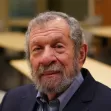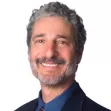The Daily Source of Urban Planning News
FEATURE
Sustainable Communities: Live Event with HUD, DOT and EPA Leadership
Whitehouse.gov held a live online event on July 15th at 2pm EDT/11am PDT on sustainable communities. All of the questions were submitted and chosen by Planetizen readers.
"Not Only Hi-Tech, It's Also Lederhosen"
Munich returns to the top of Monocle's most liveable cities for 2010. According to Monocle, Munich is a place where "wealth and prosperity are reinvested in transport, infrastructure and environmental initiatives."
"Share The Road" Now Law In Illinois
In this 4:32 minute video in a bike store, Gov. Quinn expresses his enthusiasm for cycling after signing a bill intended to make Illinois the safest state to bicycle. Motorists take heed - expect to be ticketed for driving too close to a cyclist.
The Resurrection of the Small Movie Theater
Small movie theaters, long thought dead, are having a comeback as vital centers in small towns across the country.
2nd Section of The High Line to Open in Spring
The High Line park in New York has been an enormous success, attracting 2 million visitors so far. Tom Topousis got to take a tour of the 2nd section of the park under construction, stretching from 20th to 30th Sts.
'The Valley' Gets Place-Making Power
A new joint powers authority comprised of cities and county supervisorial districts will help planning efforts in the San Fernando Valley--a sub-region often lost in the shuffle of the sprawling Los Angeles metropolis.
The Keys To Charlotte's Successful Light Rail
Many things came together for light rail to come to Charlotte, starting in 1996. Key was perseverance by a conservative mayor, a volunteer group that started a historic trolley, voters who supported a sales tax, and experienced transit professionals
Shanghai's Faux World Cities Fail to Catch On
A decade after its inception, Shanghai's One City, Nine Towns project, an ambitious attempt to manage the city's massive population growth via the creation of international-themed satellite communities, has failed to deliver hoped-for results.
Housing Prices Plummeting in Korea
The Korean Housing Institute claims that housing prices are more inflated in Korea than they've ever been in the States, and prices have begun to fall precipitously.
Calthorpe Clashes With Environmentalists
Famed architect Peter Calthorpe has designed several large developments planned for the San Francisco Bay Area, but some local environmentalist groups aren't satisfied that they are green enough.
State Fairs Latest Casualty of Budget Cuts
The Michigan State Fair, the oldest state fair in the nation, won't happen this summer. Gov. Jennifer Granholm nixed the state's usual subsidy due to the serious strain on the state's budget.
Villaraigosa Must Back His New Planner With Comprehensive Reorganization
Mayor Villaraigosa must appoint a planning director who will overcome the sprawling bureaucracy that has hindered much of the LA's endeavors, says the Los Angeles Times.
Jerry Brown's Energy Revolution, Part Two
Former California Governor (and current gubernatorial candidate) Jerry Brown may be the only person able to give the state a clean energy policy -- mainly because he's already done it before, according to this article.
Questions of Relocation in Rio's Unstable Favelas
Mudslides and unstable housing are common in the favelas of Rio de Janeiro where officials are trying to get people to relocate to safer areas.
Baseball Team's Move Could Spark Light Rail
A proposed move of the Tampa Bay Rays professional baseball team has officials in the region scrambling to make plans for a new rail line to accommodate the team's future home.
Claiming -- Not Reclaiming -- New York's Waterfront
The opening of the Brooklyn Bridge Park and other waterfront attractions in New York has many people rediscovering their waterfront. But as this op-ed argues, the waterfront can't be reclaimed as it was never even claimed in the first place.
November in California: Sea Change for the American Dream?
Columnist Dan Walters looks at issues coming before California voters this November that could revise the traditional "American Dream" within the state -- or undo efforts to change it.
A Bus-Filled Future For New York City?
This feature from <em>New York</em> magazine looks at the increasingly attractive option of introducing more bus rapid transit lines into New York City.
Closed Car Dealerships Get New Life
2,300 auto dealerships have closed in the U.S. since 2009. 649 of those have been redeveloped, becoming lumberyards, schools, chain drug stores, and groceries.
Electricity and Urban Vulnerability
In the aftermath of a brief power blackout that basically shut down large parts of Toronto, Marcus Gee ponders the vulnerability of modern cities and their "pathetic" dependence on electricity.
Pagination
Caltrans
City of Fort Worth
New Jersey Institute of Technology
Mpact (founded as Rail~Volution)
City of Camden Redevelopment Agency
City of Portland
City of Laramie
Urban Design for Planners 1: Software Tools
This six-course series explores essential urban design concepts using open source software and equips planners with the tools they need to participate fully in the urban design process.
Planning for Universal Design
Learn the tools for implementing Universal Design in planning regulations.


































